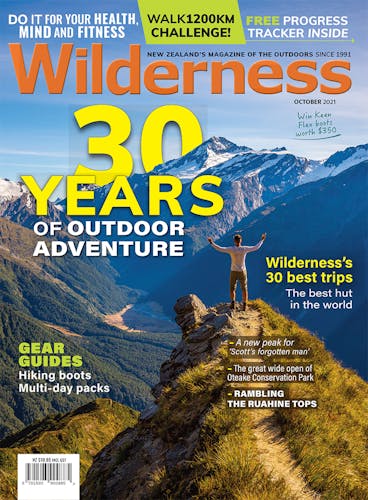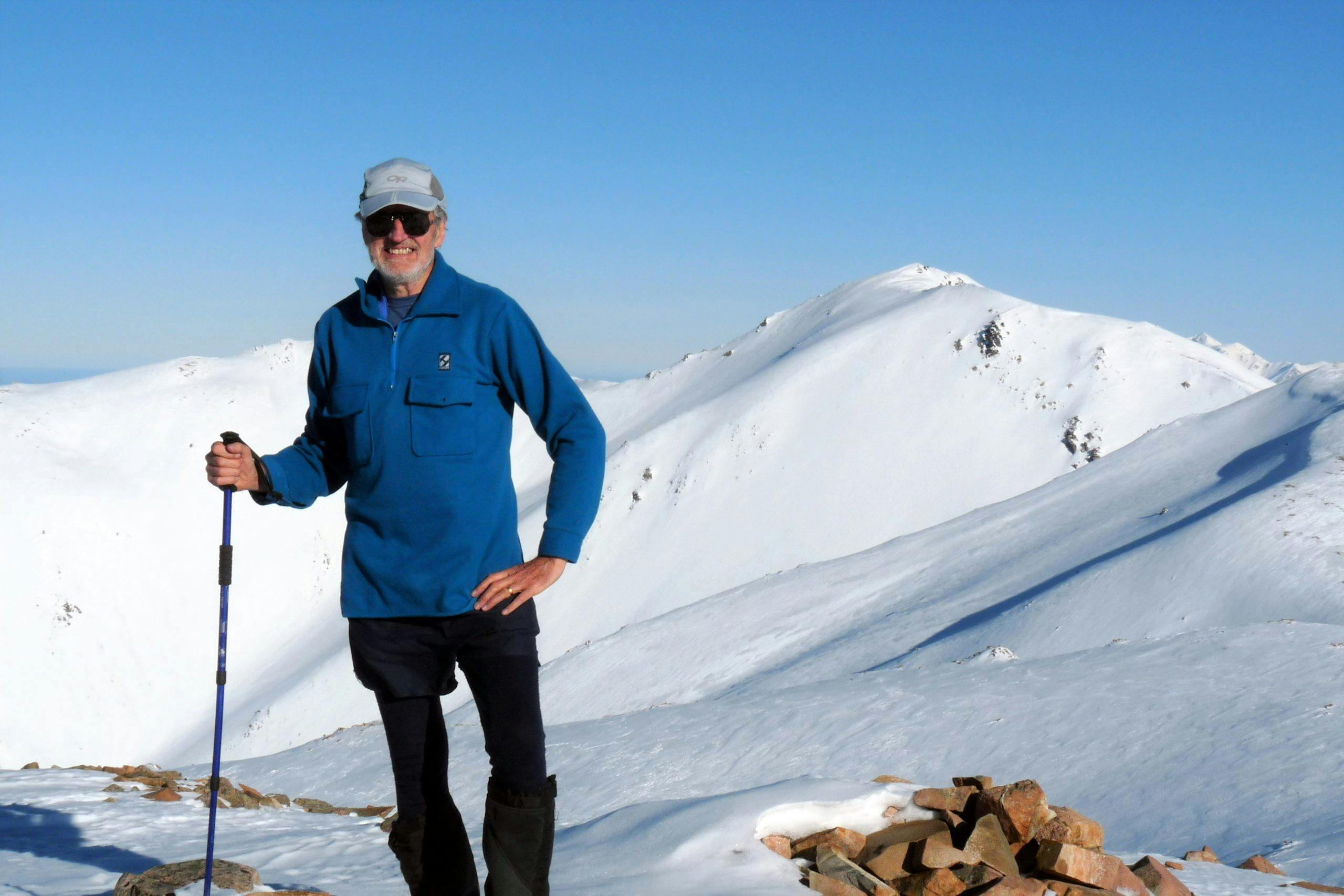Ron Hay has spent five decades tramping and climbing the backcountry of Aotearoa. His experiences and love of the mountains have been captured in his book The Spirit of the Mountains.
The Spirit of the Mountains reads like a love letter to the outdoors – was that the goal?
I wanted to celebrate the glory of the alpine world and to examine what draws us to that world. And, yes, the book is the story of my love affair with the mountains which began in boyhood when I saw the movie of Hillary and Tenzing’s ascent of Everest.
What has it meant to have your children inherit your love of the outdoors?
It’s great to know we didn’t put them off with some reasonably demanding early trips. There’s a treasure trove of warm memories from those family adventures which began in childhood and continued into adulthood. It was heartwarming when our family came up with the idea of doing the Milford Track to celebrate their mum’s 60th birthday. And now it’s great to see them taking their own young families on overnight trips.
You wrote that your most dangerous climb was of Mt Ngāuruhoe. What happened?
It’s ironic because Ngauruhoe is an easy scramble – not a technical or difficult climb. What made it so dangerous that day was the crowding on the mountain – over 900 people were doing the Tongariro Alpine Crossing and there were all these ant-like columns of people clambering up the loose rocky slopes of the volcanic cone. Boulders the size of footballs were being dislodged and bounding down the slopes. It wasn’t long before we heard an approaching chopper and someone was flown out after being hit by a boulder.
How important is remoteness for a wilderness experience?
Vital to the wilderness experience is the peace we experience there. People go into the mountains in search of quietness and stillness. Those qualities have been under threat as tourist numbers grow and operators promote our Great Walks. It’s great that Wilderness Areas have been set aside in recent years to preserve those qualities, but more can be done. Helicopters destroy the natural quiet we seek in the hills and I’d like to see tighter restrictions on flights in national parks.
How has your appreciation of the wilderness changed over five decades of tramping?
When I first began tramping and climbing, I tended to see the backcountry primarily as a great adventure playground. A lot of my focus was on the challenge of climbing peaks or exploring valleys where I hadn’t been before. As time passed, my aesthetic and spiritual appreciation of the mountain world grew. That’s been enriched, too, over the years by reading other mountain and nature writers.
Another change is a growing awareness of how fragile and threatened our wilderness is, especially in the face of climate change. I’m especially struck by the recession of our glaciers that I’ve witnessed. When I first went to climb in the Aoraki/Mt Cook area in the early 1970s there was no terminal lake in the Tasman Valley, just one or two small blue melt pools in the ice of the lower glacier.
Do you think you experienced the ‘golden age’ of the outdoors?
I used to think of the era between the First and Second world wars as the golden age in New Zealand mountaineering because the Alps had not yet been fully explored and there were many first ascents still to be made. But there were fewer huts, outdoor gear was more basic and road access wasn’t so simple. I realise my generation has enjoyed easier access to the mountains and an abundance of backcountry huts and little crowding on the popular tracks. Today, climbing conditions are deteriorating due to climate change and mountain huts are becoming much more crowded.








